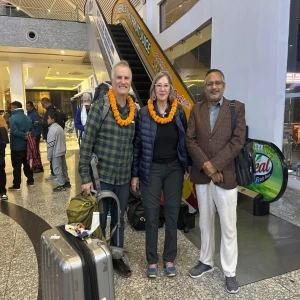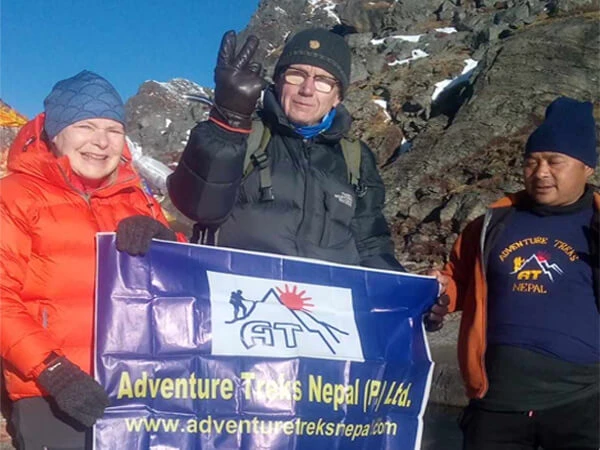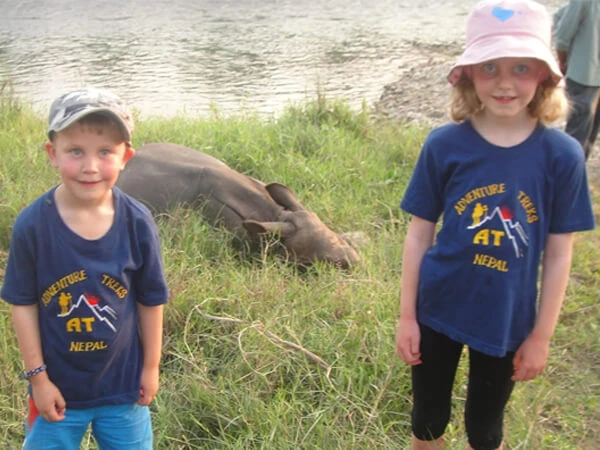With the objective of sustainable tourism in the Langtang region, Tamang Heritage trail is one of the recently opened and less travelled trekking trails in Nepal. The villagers of this region have been operating Home stays throughout the trail with the intention of offering an authentic trekking experience as you move ahead completely blending with locals. Taman Heritage region holds beep rooted belief in Buddhism and reflects ancient Buddhism through their lifestyles and monuments like Chortens.
with Rich cultural value this region has some of the jaw dropping sceneries of the central Himalayas. Located north of Kathmandu and close to the Tibetan border white pearls line up in front of trekkers marching in the Tamang Heritage route. With very few travelers on the trail, this itinerary is an ideal match for people wanting to connect with unspoiled nature.
Moreover, the gradual change in landscape from sub-tropical forest to high altitude grassland with varieties of flora and fauna is a treat to everyone. Majority of the forest is filled with Rhododendron trees (Nepal's national flower) with different species of birds, butterflies, monkeys, insects.
Furthermore, mesmerizing views of Langtang Lirung (7,234), Ganesh Himal(7,422), Langtang Ri (7,204) will be worth every step. Walking on the ancient trading route to Tibet we explore many local villages through the length of 11 Days. Our Tamang Heritage 11 Days itinerary is planned by experienced trek leaders which allows trekkers of all age groups to enjoy this unique cultural gem isolated in Langtang Region.
Join Adventure Treks Nepal and make your Himalayan dream come true. We are very flexible regarding travel dates and if you have a private group of 2 or more people, we can operate this trek with your desired date. With Easy booking procedures and experienced team members, we pride on being the leading trekking company in Nepal with utmost client satisfaction.
Tamang Heritage trek Highlights
- Less travelled trekking destination with unspoiled beauty
- Observing Himalayan range of the Langtang Region.
- Experience great hospitality of Tamang community
- Tours to World Heritage Sites in Kathmandu
- Natural Hot springs and their physical benefits
- Scenic drive towards Syabrubesi along the Trishuli River in Jeep
- Opportunity to witness rare animals and birds in Langtang National Park
- Tasting local cuisines prepared with love
- Nearest trekking destination from Kathmandu
What to Expect during Tamang Heritage Trek?
- The trail has some of the best panoramic views of the Himalayas
- Great hospitality of local people
- Staying in houses of locals referred as Home stays
- Experiencing Tamang Culture and Traditions
- Scenes of surrounding valleys
- Bathing in natural hot spring during the trek
Best Season to trek on Tamang Heritage trail
From October to December is considered the best time of the year to hike this Langtang off the beaten trail. The temperature during these months are very suitable for hiking and the skies are generally clear with some of the splendid views of Langtang Lirung, Ganesh Himal and more. The nights will not be freezing cold and the wind is also less during autumn season. In this period Nepali people celebrate some of the biggest festivals such as Dashain and Tihar, because of which the villages become livelier.
Another perfect time for Tamang Heritage Trek is the spring season. With clear mornings and mountains full of snow from winter this season also offers some of the great views. However, if you have a busy schedule this Homestay Trek in Langtang is doable throughout the year without any difficulties.
Tamang Heritage Trek Difficulty
This 11 days homestay trek is not a difficult trek and anybody without any experience of trekking but is in good physical shape can easily complete it. The highest altitude 3,156 where there is very less chance of high altitude sickness. The trail has many uphill and downhill sections which makes it challenging though. All those walks will be rewarded with some of the great views of Himalayan range and rich culture.
However, it is always better if you involve yourself in walking and some physical exercises before your trekking. It will make your experience even better and less challenging.
Why Tamang Heritage Trek?
- Less crowded compared to other trekking trails.
- Contribution to the local economy as we will be completely depending on locals for food and accommodation.
- Support for sustainable tourism.
- Suitable for people of all age groups and different group sizes.
- Blending with local culture.
- Tasting authentic Tamang and Nepali cuisines.
















